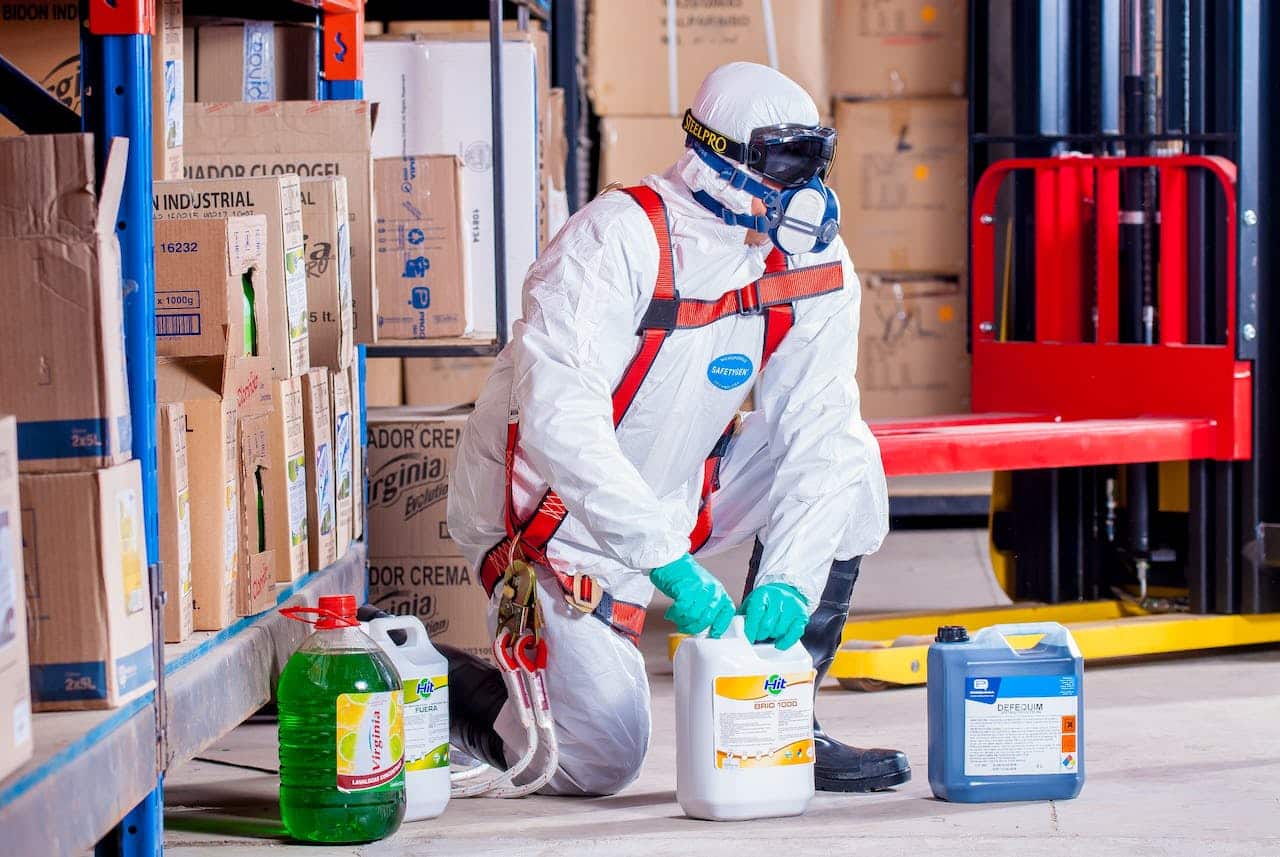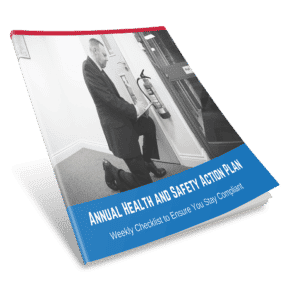
According to The Health and Safety Executive, or HSE, exposure to hazardous substances causes thousands of issues and ill health for UK workers every year.
Safety data sheets (SDS) are just one of the many elements involved in protecting your people, and your business, from harm.
What Is A Safety Data Sheet?
Safety data sheets are documents supplied by the manufacturer for any hazardous substances.
They contain essential info about the chemical or chemical mixture, describing its properties and the hazards it presents. An SDS crucially includes information about proper handling and storage of the substance, as well as what to do in the face of an emergency.
The presence of a safety data sheet means that a company can accurately and adequately risk assess the chemical in question, which is necessary for businesses to remain COSHH compliant and keep their people safe from harm. An SDS informs the risk assessment process and should not be used as a replacement for one.
Why Is A Safety Data Sheet Important?
If your business uses hazardous substances, safety data sheets are integral to keeping your workers free from excessive and potentially life-altering exposure.
Some hazardous substances are produced by workplace processes, such as welding fumes or flour dust, and others can be biological, like bacteria and viruses. Hazardous chemicals most commonly found in workplaces are chemicals that have broad usage. This can include cleaning products, paints, solvents, fuels and pesticides.
Safety data sheets identify critical aspects of all hazardous chemicals, and this is incredibly important given there are so many different types.
Hazards
An SDS specifies what exact hazards the chemical substance presents. This enables businesses to correctly assess the risks of those chemicals to others. The risks associated with exposure to a virus will be very different than those associated with exposure to welding fumes, for example.
Prevention
The nature of hazardous substances can vary wildly, and that means prevention or reduction of exposure can be achieved in many different ways. An SDS is important because no two methods of prevention will be the same.
Response
If an incident does occur, the SDS describes what needs to be done in response. For serious occurrences, this could be the difference between life and death or severe harm.
What’s Included In An SDS?
16 key pieces of information must feature on a Safety Data Sheet:
1 – Identification Of Substance
This means the chemical name and/or trade name, as well as details of the manufacturer or supplier and emergency contact details for them.
2 – Identification Of Hazards
This refers to the substance’s classification and label.
3 – Ingredients
This section must include what goes into the mixture or composition of the substance.
4 – First Aid
Should exposure have occurred, this section describes the symptoms and what to do in the event of contact, inhalation and ingestion.
5 – Firefighting
You must use different fire extinguishers for different chemical reactions.
6 – Accidental Release
This section tells you what to do in the event of a spillage or leak.
7 – Handling And Storage
Included in this bit of the SDS is information surrounding safe storage, incompatibility and hygiene measures.
8 – Exposure
PPE requirements and workplace exposure limits are described here.
9 – Properties
What form the substance is in, flash points and boiling points are all key pieces of information you’ll find here.
10 – Stability And Reactivity
Any conditions or environments to avoid will be listed here.
11 – Toxicology
If any tests have been done on the hazardous chemical, they will be stated here.
12 – Ecology
Ecological toxicity and other related information is in this section.
13 – Disposal
Anyone around the substance needs to know how to properly dispose of the substance, empty packaging and contaminated packaging.
14 – Transport
UN number, classification details and environmental hazards are all included here to inform how the substance should be transported.
15 – Regulations
Any applicable legislation is featured here.
16 – Other
If there is anything else important to note, it must be included in this section, such as the revision date for the SDS itself.

Is A Safety Data Sheet A Legal Requirement?
Safety data sheets are required for each chemical substance deemed hazardous. They are necessary to ensure compliance with the following regulations:
- Control of Substances Hazardous to Health (COSHH) Regulations 2002 This law requires businesses to adequately control exposure to hazardous materials in the workplace.
- The REACH Regulations addresses the production and use of chemical substances.
- The Health and Safety at Work etc. Act 1974, which is the primary piece of legislation covering occupational health and safety in Great Britain.
- The GB CLP Regulation. From January 2021, the classification, labelling and packaging of chemicals placed on the market in Great Britain (England, Scotland and Wales) is regulated by this piece of legislation.
What To Do With Obtained Safety Data Sheets
When you’re responsible for working with hazardous chemicals, the first thing you need to do is check you have received an SDS when your substances are delivered or collected.
Next, it’s crucial to complete a COSHH risk assessment so that you can identify the hazards and put control measures in place to protect your workforce, the environment and the future of your business.
SDSs should be stored safely and easily accessible, regardless of whether they are digital or hard copy versions. You should also put into place a regular review process to ensure nothing has changed that might impact the way the chemical is handled, stored and used.
And finally, if you have lost an SDS, contact the manufacturer to get a replacement as soon as possible.
Don’t Overlook The Safety Data Sheet
Without all of the information featured on an SDS, the chemicals used in your workplace may not be stored, handled or used correctly.
Not only could this cause problems for the health and safety of your workers, but potential civil claims and legal prosecution for noncompliance could see your business suffer.
Need to upskill your people on hazards in the workplace? Envesca offers a huge array of training courses, including the Highfield Level 2 Award in the Control of Substances Hazardous to Health half-day course and also the Level 2 Principles of COSHH eLearning course. Get in touch with us today.
Find this helpful?
Signup to our email notifications to receive alerts when we publish new blogs. We promise not to spam your inbox, you will just get a short snappy intro to Health and Safety articles we think you will love.
"*" indicates required fields

Annual Health and Safety Action Plan
If you’ve got a question or query, please contact our super friendly team, they will be delighted to help you!
Simply get in touch via phone or email.

Free
Resources &
Downloads
Informative. Useful. Practical.
Here at Envesca we believe that we are good at giving proactive, sensible and useful advice. Below you will find some free resources that you can download on a host of subjects that will help you and your business.
Training Available
Envesca offer a number of different training courses, which offer advice and guidance on these topics.






